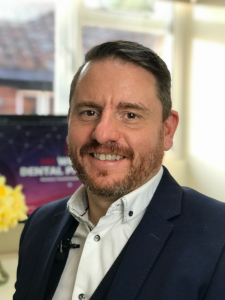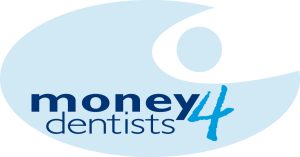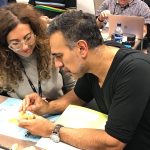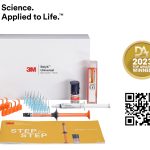Abstract:
This case report describes the successful management of a failing upper right 4567 bridge in a 67-year-old female using advanced digital dentistry techniques. The process involved virtual extraction, CBCT planning, guided surgery, and in-house milling of the final prosthesis.
Introduction:
The evolution of digital dentistry has revolutionized the way dental procedures are planned and executed. This case highlights the integration of various digital tools and techniques to achieve a predictable and satisfactory outcome.
Case Presentation:
Patient Profile:
- Age: 67 years
- Gender: Female
- Medical History: Fit and well with no known medical problems.
Initial Presentation:
The patient presented with a failing upper right 4567 bridge anchored on UR4 and UR7.
Methods:
- Virtual Extraction:
- Tool Used: Medit Design
- Procedure: The failing bridge was virtually extracted using a scan from the Medit i700.
- Implant Planning:
- Tools Used: CBCT and Medit i700 scan
- Software: SMOP guided surgery software by Swissmeda
- Plan: A four-tooth bridge with Anthogyr Axiom X3 implants at the upper right first premolar and the upper right second molar.
- Surgical Guide Fabrication:
- Printer: Asiga Max UV
- Material: Keyguide resin
- Post-Processing: After washing, Anthogyr integral sleeves were placed before the final post-processing cure.
- Implant Placement:
- Kit Used: Anthogyr integral kit
- Procedure: Immediate implant placement followed by the placement of healing abutments. The sockets were augmented using bovine xenograft.
- Restoration:
- After an 8-week healing period, scan bodies were utilized.
- Design: Custom gold anodised titanium abutments and a cement-retained lithium disilicate bridge using Kronos blocks.
- Milling: Custom abutments were milled by Simeda. However, the surgical guide planning, CAD design, and final bridge were milled and completed in-house by Professor Adam Nulty.
Results:
The patient achieved a functional and esthetically pleasing result with the new bridge. The integration of advanced digital techniques ensured a predictable and satisfactory outcome.
Discussion:
The integration of digital dentistry into clinical practice has been a transformative evolution in the field. The case presented here underscores the importance of a comprehensive digital workflow in modern implant dentistry. The use of virtual planning, guided surgery, and in-house milling ensured precision and reduced the overall treatment time.
- Virtual Planning and Guided Surgery:
The utilization of virtual planning tools, such as the Medit Design and SMOP guided surgery software by
Swissmeda, allows for a more predictable surgical outcome. Mangano et al. (2017) highlighted that digital workflows, including virtual planning and guided surgery, improve the accuracy of implant placement, reduce surgical time, and minimize post-operative complications(1). This precision ensures that the implant is placed in the most optimal position, reducing the risk of complications and ensuring the longevity of the implant. - Immediate Implant Placement:
Immediate implant placement, as executed in this case, has its advantages. Chen and Buser (2009) emphasized the benefits of immediate implant placement, including reduced treatment time, preservation of soft and hard tissues, and improved esthetic outcomes(2). This method not only speeds up the treatment process but also results in better patient satisfaction due to the reduced number of visits and faster recovery. - Digital Impressions and In-House Milling:
The Medit i700 scanner was instrumental in obtaining accurate digital impressions. According to Nulty (2022), the trueness and precision of digital scanners, including the Medit i700, are remarkable, ensuring that the final prosthesis fits perfectly(3). Furthermore, in-house milling, as done by Professor Adam Nulty in this case, provides the clinician with greater control over the final prosthesis design and fit, leading to improved patient satisfaction(4). - 3D Printing and Accuracy:
The Asiga Max UV was used for printing the surgical guide. Nulty (2021) in his study compared the trueness and precision of various 3D printers, including the Asiga Max UV, and found them to be highly accurate. The Asiga Max UV was statistically superior to others with overall trueness under 35 μm, ensuring that the printed surgical guides fit precisely during surgery(5). The accuracy of such printers is crucial in ensuring that the surgical guide aligns perfectly with the patient’s anatomy, ensuring successful implant placement. - Material Selection:
The choice of bovine xenograft for socket augmentation is supported by studies that have shown its efficacy in preserving alveolar ridge dimensions post-extraction6. Additionally, the use of lithium disilicate for the final bridge, known for its excellent esthetic properties and durability, aligns with the current trend in restorative dentistry(7). - Collaborative Approach:
The collaboration between different digital tools, materials, and experts, as seen in this case, is a testament to the multidisciplinary nature of modern dentistry. Such an approach ensures that patients receive the best possible care, combining expertise from various domains. - The Significance of Primary Stability and Implant Design:
One of the critical aspects of successful dental implantation is achieving excellent primary stability. Primary stability refers to the mechanical stability of an implant immediately after placement, and it’s a crucial factor in determining the success of osseointegration and the overall outcome of the implant procedure. The Anthogyr Axiom x3, with its unique implant design, has been recognized for providing exceptional primary stability. Primary stability ensures that the implant securely anchors into the bone, reducing micromovements that can hinder the osseointegration process. This stability is not just beneficial for the immediate post-operative period but also plays a pivotal role in the long-term success of the implant.(8)
Conclusion:
Digital dentistry, when used comprehensively, can offer patients a swift and precise treatment plan, leading to predictable outcomes. This case serves as a testament to the advancements in the field and their practical applications.
In conclusion, the advancements in digital dentistry, as demonstrated in this case, offer a holistic approach to patient care. By integrating various digital tools and techniques, clinicians can achieve predictable, efficient, and esthetically pleasing outcomes.
References:
- 1) Mangano, F., Gandolfi, A., Luongo, G., & Logozzo, S. (2017). Intraoral scanners in dentistry: a review of the current literature. BMC Oral Health, 17(1), 149. ↩
- 2) Chen, S. T., & Buser, D. (2009). Clinical and esthetic outcomes of implants placed in postextraction sites. The International Journal of Oral & Maxillofacial Implants, 24(suppl), 186-217. ↩
- 3) Nulty, A. (2022). A comparison of trueness and precision of 12 3D printers used in dentistry. BDJ Open, 8(1), 14. ↩
- 4) Alghazzawi, T. F. (2016). Advancements in CAD/CAM technology: Options for practical implementation. Journal of Prosthodontic Research, 60(2), 72-84. ↩
- 5) Nulty, A. B. (2021). A Comparison of Full Arch Trueness and Precision of Nine Intra-Oral Digital Scanners and Four Lab Digital Scanners. Dent J (Basel), 9(7), 75. ↩
- 6) Araújo, M. G., & Lindhe, J. (2015). Ridge preservation with the use of Bio-Oss® collagen: A 6-month study in the dog. Clinical Oral Implants Research, 21(5), 574-580. ↩
- 7) Fabbri, G., Zarone, F., Dellificorelli, G., Cannistraro, G., De Lorenzi, M., Mosca, A., & Sorrentino, R. (2017). Clinical evaluation of 860 anterior and posterior lithium disilicate restorations: retrospective study with a mean follow-up of 3 years and a maximum observational period of 6 years. The International Journal of Periodontics & Restorative Dentistry, 37(1), 19-31. ↩
- 8) Tettamanti L, Andrisani C, Bassi MA, Vinci R, Silvestre-Rangil J, Tagliabue A. Immediate loading implants: review of the critical aspects. Oral Implantol (Rome). 2017 Sep 27;10(2):129-139. doi: 10.11138/orl/2017.10.2.129. PMID: 29876038; PMCID: PMC5965071.
Acknowledgments:
The team acknowledges the contributions of Professor Adam Nulty for his expertise and in-house work on this case.
Conflicts of Interest:
None to declare.
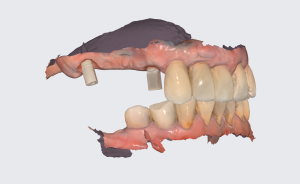

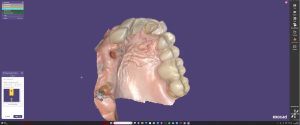
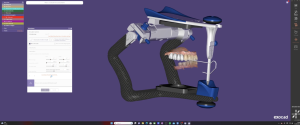
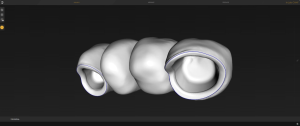
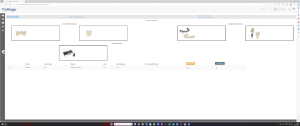
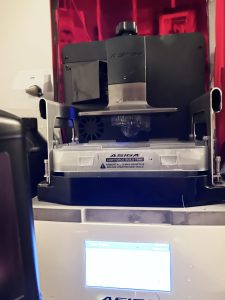
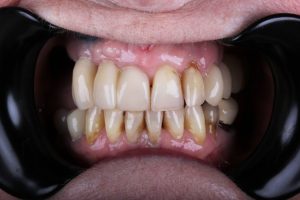
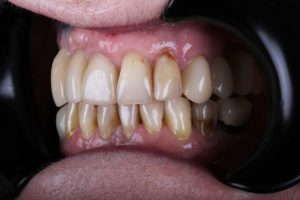
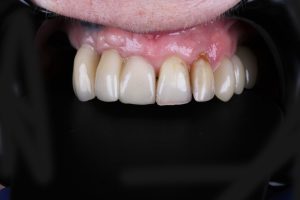
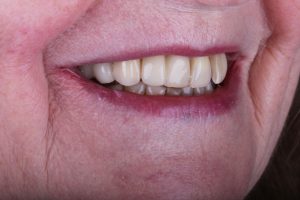
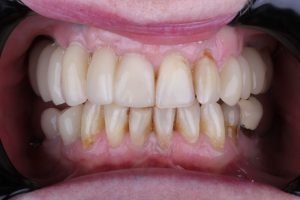
Prof Adam Nulty
BChD MJDF RCS Eng PGCert MSc (Dist.) MAcadMed
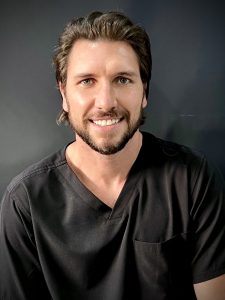
Short Bio;
Adam, the “Digital Dentist”, is a highly experienced clinician with a special interest in Restorative & Aesthetic Dentistry, Digital Dentistry and Implantology.
In 2013 he completed a Master of Science degree in Restorative and Aesthetic dentistry from the University Of Manchester, achieving a Distinction and is currently researching guided implantology in a PhD at Leeds University.
Adam lectures and Mentors on the Restorative and Aesthetics MSc for Manchester University and is Course Director and Lecturer for Several Guided Implant Systems such as SMOP and Dentiq having worked with computer assisted implant surgery from 2011 and having completed hundreds of fully and partially guided surgery cases in that time.
He currently sits as President of the International Digital Dental Academy, co-founding the unbiased platform for Digital Dentistry along with the Digital Dental Academy Masterclass Courses.
Adam was asked to sit as Professor of Digital Dentistry to oversee the integration of Digital technologies across all departments and also sit as Course Director for the MSc in Digital Dentistry with the College of Medicine and Dentistry, Birmingham.
Shortlisted, Finalist and Winner of several industry awards, from Best Young Dentist 2013,2014,2015 and 2017 to Best Dental Team and Best Oral Health Promoter 2014 & 2015 and winner of several categories in the 2015 and 2018 Aesthetic Dentistry Awards, Dentistry Awards and Private Dentistry Awards.
Overall a respected lecturer and mentor in the field of 3D radiograpy, digital dentistry, implant planning and template guided implant placement.




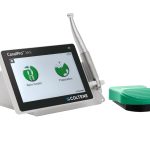


 Cavities can form for a number of reasons including bacterial biofilm, eating sugary snacks, consuming drinks with a high sugar content, and insufficient dental hygiene. In the short term, if decay is left untreated, the cavity is likely to grow larger, and begin to impact deeper layers of tooth structure. This can result in tooth sensitivity, mild or sharp pain, and staining.
Cavities can form for a number of reasons including bacterial biofilm, eating sugary snacks, consuming drinks with a high sugar content, and insufficient dental hygiene. In the short term, if decay is left untreated, the cavity is likely to grow larger, and begin to impact deeper layers of tooth structure. This can result in tooth sensitivity, mild or sharp pain, and staining.


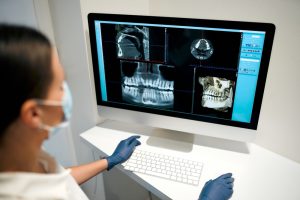 There are many ways for companies to interact with the profession. For productive and practical product development, two-way communication is essential between the dental manufacturer and the dental team. Actively seeking feedback from the end user and listening to what they say is crucial for any manufacturer, but in a fast-paced and intricate profession like dentistry, it is even more important to implement positive change and improve experiences.
There are many ways for companies to interact with the profession. For productive and practical product development, two-way communication is essential between the dental manufacturer and the dental team. Actively seeking feedback from the end user and listening to what they say is crucial for any manufacturer, but in a fast-paced and intricate profession like dentistry, it is even more important to implement positive change and improve experiences.